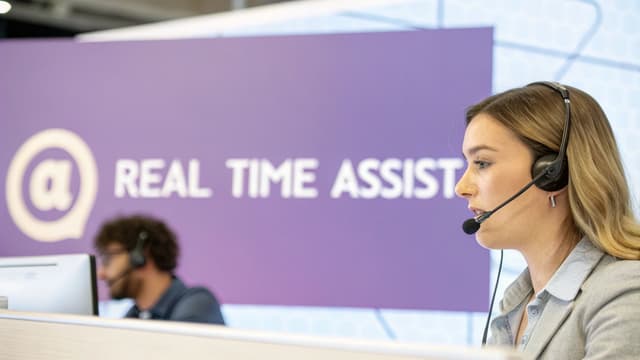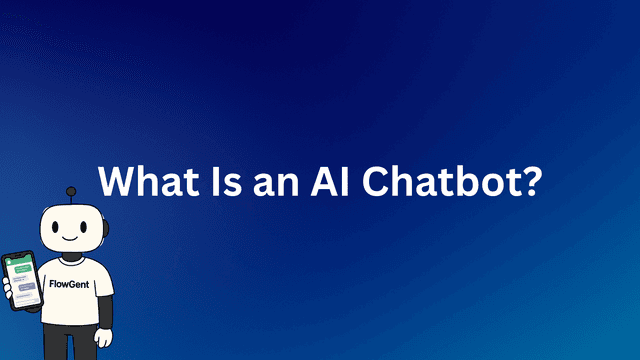Understanding What Makes Chatbots Actually Intelligent
Building a chatbot is more than just setting up automated responses. The real key is creating a system that understands and responds to user queries in a natural and helpful way. This means understanding the core principles of chatbot intelligence, moving beyond basic, rule-based systems and embracing machine learning. Interested in learning more? Check out this resource: How to master chatbots.
The Limitations of Rule-Based Chatbots
Traditional rule-based chatbots operate on a pre-defined set of rules. They follow a rigid script, providing limited responses based on specific keywords. If a user asks a question outside the script, the chatbot likely won't have a relevant answer. This can lead to frustrating user experiences and diminish the chatbot's overall value.
The Power of Machine Learning
This is where machine learning becomes important. Unlike rule-based systems, machine learning algorithms allow chatbots to learn from data and improve over time. This enables them to handle a broader range of queries, understand language nuances, and offer more personalized responses. Effective chatbot training involves leveraging these algorithms, which are now central to developing advanced AI systems. The growth of the chatbot market demonstrates the increasing importance of AI in business and customer engagement. Find more detailed statistics here.
Different Architectures for Different Needs
Chatbot architecture can range from simple to complex depending on its purpose.
-
FAQ Bots: These are the simplest type, designed to answer frequently asked questions. They're suitable for basic information and routine inquiries.
-
Customer Service Systems: More complex chatbots can integrate with CRM systems and other business tools to provide personalized support and resolve customer issues. These chatbots can handle various tasks, such as checking order status, scheduling appointments, and escalating complex issues to human agents.
Choosing the right architecture depends on your needs and budget. A simple FAQ bot might suffice for a small business, while a larger enterprise might need a more complex customer service system. Understanding these differences is crucial for making informed decisions when training your chatbot with FlowGent AI.
Setting Goals That Actually Drive Success

Before diving into the technical how-to's of chatbot training, it's crucial to establish clear, measurable objectives. These goals should directly support your core business needs, whether that's improving customer support, qualifying leads, or streamlining internal processes. Taking this proactive approach lays the foundation for a successful chatbot training program within the FlowGent AI platform.
Defining Measurable Training Goals
Just like an athlete training for a competition, your chatbot needs well-defined goals. These objectives provide a roadmap for the training process and act as benchmarks to gauge progress. For example, if your goal is to improve customer satisfaction, a measurable objective could be to increase positive feedback ratings by 15%.
If lead generation is your focus, you might aim for a 10% increase in qualified leads generated through chatbot interactions. Having concrete targets helps focus your efforts and provides a clear measure of success.
Establishing Key Performance Indicators (KPIs)
Choosing the right Key Performance Indicators (KPIs) is essential. Focus on metrics that reflect the true impact of your chatbot on your business, not just surface-level numbers. This means prioritizing KPIs that directly relate to business outcomes like conversion rates, customer retention, and cost savings.
While benchmarking against industry standards is helpful, it's important to set realistic expectations based on your specific use case. Studies show that 87.2% of consumers consider their bot interactions successful, underscoring the value of a well-designed training program. Find more detailed statistics here. The training process involves developing the AI's language understanding and integrating it with your business systems for greater efficiency.
Frameworks for Goal Setting
Several established frameworks can help structure your goal-setting process:
- SMART Goals: This framework ensures your goals are Specific, Measurable, Achievable, Relevant, and Time-bound.
- OKRs (Objectives and Key Results): This approach involves setting ambitious Objectives and tracking progress through measurable Key Results.
- North Star Metric: This method focuses on a single, overarching metric that represents your chatbot's ultimate contribution to your business.
By following a structured approach to goal setting, you can avoid wasting valuable training time and resources. This emphasis on measurable outcomes contributes significantly to the long-term success of your chatbot project, ensuring it becomes a valuable asset, not a costly experiment. From here, you can move on to the crucial step of data collection, the backbone of effective chatbot training.
Gathering Training Data That Actually Works
High-quality training data is the bedrock of any successful chatbot. It's the key differentiator between a chatbot that provides helpful assistance and one that leaves users frustrated with unhelpful responses. This means understanding how to train a chatbot starts with collecting the right kind of data. We'll explore effective methods for gathering data that reflects real user interactions, setting your chatbot up for success within the FlowGent AI platform.
Identifying Valuable Data Sources
Effective chatbot training hinges on using a variety of data sources, each offering unique insights. Conversation logs from past customer service interactions are a goldmine of real-world examples. Labeled examples, specifically designed for training, allow for precise control over the chatbot's replies. Synthetic dialogues, artificially created, address edge cases and fill gaps in your existing data. The following infographic illustrates the data volume potential from these three key sources:

As the infographic shows, conversation logs offer the highest volume of training data, followed by labeled examples, and then synthetic dialogues. This underscores the importance of using existing customer interactions as a foundation for your training data. For a deeper dive into the importance of training data, check out this resource: How to master training data.
Cleaning and Structuring Your Data
Data in the real world is rarely clean and organized. Cleaning this data is essential for effective chatbot training. This process involves removing irrelevant information, fixing errors, and standardizing formats. Structuring the conversations into a chatbot-readable format is equally crucial.
This might involve segmenting dialogues into individual turns, identifying user intents, and labeling key entities. By properly cleaning and structuring your data, you ensure the chatbot can effectively learn and understand the patterns within the information.
Data Augmentation and Multilingual Considerations
Data augmentation techniques can significantly expand your training dataset by creating variations of existing data. These techniques, such as back translation or synonym replacement, can help the chatbot generalize better. For instance, translating a phrase into another language and then back to the original language can introduce subtle variations that enhance the chatbot's learning.
However, multilingual requirements add another layer of complexity. One approach is to translate existing data, but this can be resource-intensive. Alternatively, using multilingual pre-trained models can provide a strong starting point.
To help summarize the different data types and their uses, consider the following table:
Data Types and Sources for Chatbot Training: Comparison of different data sources, their quality ratings, and best use cases for chatbot training
| Data Source | Quality Rating | Volume Potential | Best Use Case | Preparation Time |
|---|---|---|---|---|
| Conversation Logs | High | High | Understanding real user interactions | Moderate |
| Labeled Examples | High | Medium | Training specific chatbot responses | High |
| Synthetic Dialogues | Medium | Low | Addressing edge cases and filling gaps | Low |
This table highlights the strengths and weaknesses of each data source. While conversation logs offer high volume and real-world relevance, they require more preparation. Labeled examples offer high quality but are more time-consuming to create. Synthetic data is quick to generate but may not always perfectly reflect real-world scenarios.
Eliminating Bias in Training Data
Biases within training data can lead to unfair or discriminatory outcomes. Identifying and mitigating these biases is paramount. For example, if your training data overrepresents one demographic, your chatbot's performance may suffer with other user groups. Careful analysis and curation of your training data are therefore essential for ensuring fairness and inclusivity. This careful attention to detail ensures your chatbot reflects the diversity of your user base and provides equitable service to all. By addressing potential biases, you can create a chatbot that not only performs well but also interacts ethically with every user.
Training Methods That Deliver Real Results

Now that we've explored data collection, let's discuss how to train your chatbot. To learn more about how to train ChatGPT with your data, check out how to train ChatGPT with your data. This involves understanding different training methods and their implementation within the FlowGent AI platform. Choosing the right method depends on your goals and the chatbot's complexity.
Supervised Learning: The Foundation of Chatbot Training
Supervised learning is a common starting point. This method uses a labeled dataset of conversations. Each input has a corresponding desired output. It's similar to using flashcards with questions and answers. The chatbot learns to connect user inputs with the right responses based on these examples.
For example, if a user asks "What are your store hours?", the dataset provides the correct answer. This could be something like, "Our store hours are 9 AM to 5 PM, Monday through Friday." Supervised learning works well for training chatbots to manage specific, pre-defined situations.
Reinforcement Learning: Learning Through Interaction
Reinforcement learning takes a different path. Instead of labeled data, the chatbot learns by interacting with users in a simulated setting. Correct responses earn rewards, while incorrect ones receive penalties, much like training a pet. This allows the chatbot to learn complex conversational patterns and adapt to unexpected inputs.
However, reinforcement learning requires careful design of the reward system and simulated environment. This careful design ensures the chatbot learns effectively.
Transfer Learning: Leveraging Pre-trained Models
Building a chatbot from the ground up takes time. Transfer learning offers a shortcut by using pre-trained models. These models have already learned from massive datasets. They can be fine-tuned for your specific needs. It's like starting a race halfway through.
This is particularly helpful for smaller businesses or those with limited training data. Transfer learning significantly reduces the time and resources required.
Iterative Training and A/B Testing: Continuous Improvement
Chatbot training isn't a one-time task. It's a continuous process. Iterative training refines the chatbot's performance through repeated cycles of training, evaluation, and adjustment. This gradually improves accuracy and responsiveness. For efficient data gathering, consider content creation automation.
A/B testing is also valuable. This compares different training approaches or chatbot configurations to find the best performer. By systematically testing variations, you optimize your chatbot for maximum impact. This ongoing improvement ensures your chatbot stays relevant and adapts to changing needs. It also enables data-driven decisions, maximizing your return on investment.
Fine-Tuning for Specific Use Cases
Finally, fine-tuning adapts pre-trained models to your specific requirements. This might involve adjusting parameters, adding custom data, or retraining parts of the model. This ensures the chatbot aligns with your brand, target audience, and business goals.
Customizing responses and behavior creates a more personalized and engaging experience. This sets your chatbot apart from generic solutions, providing a competitive edge and increasing customer satisfaction. Combined with continuous improvement, this makes your chatbot a valuable asset, improving your bottom line and overall business strategy.
Why Smart Businesses Are Investing in Chatbot Training Now
The business landscape is constantly evolving. To stay competitive, companies need to adapt to new technologies and shifting customer expectations. Conversational AI, specifically through trained chatbots, is one area seeing tremendous growth. These aren't your grandpa's automated response systems; they're sophisticated tools that enhance customer experiences, streamline operations, and fuel business growth.
Chatbots: From Novelty to Necessity
Once considered a novelty, chatbots are now vital for businesses aiming to deliver 24/7 customer support, create personalized interactions, and scale their operations efficiently. This change is driven by customers who increasingly expect instant communication and readily available information. Well-trained chatbots are no longer a "nice-to-have" but a key competitive differentiator.
The Expanding Market and ROI of Chatbots
This growing importance is reflected in market projections. The AI chatbot market is poised for substantial growth, expected to climb from $15.6 billion in 2024 to $46.6 billion by 2029, with a CAGR of 24.5%. This rapid expansion highlights the value businesses place on conversational AI. Find more detailed statistics here. This growth translates to significant potential ROI for businesses investing in chatbot training today.
Competitive Advantages and Emerging Opportunities
Across industries, businesses use trained chatbots to lower support costs, boost customer satisfaction, and drive sales. For instance, chatbots can manage routine inquiries, freeing human agents to address more complex issues. Automated text messages can further enhance chatbot strategies, as outlined in this guide. Trained chatbots also offer personalized product recommendations, potentially leading to higher conversion rates. Innovative companies are even exploring emerging applications of conversational AI, including lead generation, market research, and internal communications.
Regional Variations and Global Strategies
Chatbot adoption varies regionally. Understanding these nuances is crucial for global businesses developing their AI strategies. Factors like cultural preferences and language differences impact how users interact with chatbots. Adapting training approaches and conversational styles to local markets is essential for maximizing engagement and effectiveness. By acknowledging these variations, businesses can create global chatbot strategies that connect with diverse audiences, opening doors to new markets and opportunities.
Testing, Launching, and Improving Your Chatbot

Training a chatbot is just the beginning. To make sure it stays a valuable part of your FlowGent AI setup, you need to constantly monitor, test, and improve it. This means understanding that training also involves knowing how to refine your chatbot after it's live.
Comprehensive Testing Strategies
Before launching, rigorous testing is crucial. This includes checking the basics, like answering simple questions and navigating conversations smoothly. For example, make sure your chatbot responds correctly to greetings and gives accurate information about your products or services.
Beyond the basics, stress testing is essential. This simulates real-world conversation volumes to find any bottlenecks or breaking points. Stress testing helps you see how your chatbot performs under pressure, ensuring a good user experience even during peak times. Testing lets you catch and fix problems before they affect your users.
Monitoring Real-World Performance
After launch, ongoing monitoring is key. Use monitoring systems in the FlowGent AI platform to track real-world metrics. These might include response times, error rates, and user satisfaction.
For example, track how long your chatbot takes to respond and how often it gives inaccurate or unhelpful information. This continuous monitoring helps you pinpoint areas for improvement and ensures your chatbot continues meeting your business goals. For further information, you can read more about how to master chatbot implementation.
Gathering and Incorporating User Feedback
Real user feedback is incredibly valuable. Set up ways to collect feedback, like in-app surveys or feedback forms. This gives you direct insight into what users find helpful and what frustrates them.
Ask users to rate their chatbot interactions and give open-ended feedback. This helps you understand how your target audience perceives your chatbot. You can then use this information to make specific improvements. Also, analyze conversation logs to identify recurring issues or areas where your chatbot struggles with new questions. This proactive approach helps you stay ahead of potential problems and keep users happy.
Version Control and Rollback Procedures
As you update and improve your chatbot, use version control for your models. This lets you track changes, try new features, and easily go back to older versions if needed. It’s like saving different drafts of a document.
Version control enables rollback procedures, giving you a safety net if updates cause unexpected problems. This protects you from service disruptions and ensures consistent performance.
The following table summarizes the key elements of chatbot performance testing:
Chatbot Performance Testing Checklist
| Testing Phase | Success Criteria | Common Issues | Tools Required | Timeline |
|---|---|---|---|---|
| Basic Functionality Testing | Correct responses to simple queries, smooth navigation through conversation flows | Incorrect answers, inability to handle complex conversations | FlowGent AI platform, testing scripts | Pre-launch |
| Stress Testing | Stable performance under simulated high load, identification of bottlenecks | System crashes, slow response times under pressure | Load testing tools, monitoring systems | Pre-launch |
| Real-World Monitoring | Acceptable response times, low error rates, high user satisfaction | Slow responses, frequent errors, negative user feedback | FlowGent AI monitoring tools, user feedback systems | Post-launch, ongoing |
| User Feedback Analysis | Identification of areas for improvement based on user input | Difficulty collecting feedback, lack of actionable insights | Survey tools, feedback forms, conversation log analysis | Post-launch, ongoing |
| Version Control and Rollback | Successful implementation of version control, ability to revert to previous versions | Difficulty tracking changes, inability to rollback effectively | Version control system | Ongoing |
This checklist provides a valuable framework for ensuring your chatbot's performance.
Maintaining Performance as Your User Base Grows
As your user base grows and changes, keeping your chatbot performing well gets more challenging. Regularly review your training data and update it with new user queries and interactions. This helps your chatbot adapt to changing needs and maintain accuracy.
Also, consider using automated training processes to streamline updates and ensure your chatbot constantly learns from new data. This lets your chatbot scale with your business, providing consistent, high-quality interactions no matter how many users you have. This adaptability is key to maximizing your chatbot's long-term value and ensuring it remains a valuable asset.
Key Takeaways
Training a chatbot effectively involves several crucial steps. When followed carefully, these steps can significantly impact the success of your chatbot project. This section distills these crucial elements into actionable takeaways you can implement today using FlowGent AI.
Defining Clear Objectives and Metrics
One of the most important takeaways is the importance of clearly defined objectives. Your goals should align with specific business needs, whether that's improving customer support or generating leads.
For example, aiming for a 15% increase in positive customer feedback or a 10% rise in qualified leads are measurable objectives that drive tangible results. Choosing the right Key Performance Indicators (KPIs) is also crucial.
Focus on metrics that directly impact your bottom line, such as conversion rates and cost savings.
Gathering and Preparing High-Quality Data
Effective chatbot training relies heavily on high-quality data. Gathering data from various sources—conversation logs, labeled examples, and synthetic dialogues—ensures your chatbot can handle diverse user interactions.
Cleaning and structuring this data is equally important. Removing irrelevant information, fixing errors, and organizing conversations into a chatbot-readable format are vital preprocessing steps.
Addressing potential biases in your data is also essential to ensure fairness and inclusivity in your chatbot's responses.
Selecting the Right Training Method and Platform
Choosing the appropriate training method is crucial. Supervised learning, reinforcement learning, and transfer learning each offer unique advantages depending on your chatbot's complexity and your resources.
FlowGent AI provides a platform for implementing these methods effectively. Iterative training, A/B testing, and fine-tuning allow for continuous improvement, ensuring your chatbot adapts to evolving user needs and maintains optimal performance.
Testing, Monitoring, and Iterating for Continuous Improvement
Launching your chatbot is just the beginning. Comprehensive testing strategies, including basic functionality checks and stress testing, are essential for identifying and resolving issues before they affect users.
Ongoing monitoring of real-world performance, gathering user feedback, and incorporating these insights into your training cycles are vital for continuous improvement.
Version control and rollback procedures provide a safety net, allowing you to revert to previous versions if updates cause unexpected problems.
By focusing on these key takeaways, you can create a chatbot that not only meets your business objectives but also provides a positive and valuable experience for your users. Remember, training a chatbot is an ongoing process. Consistent effort and adaptation are key to long-term success.
Ready to transform your customer support and increase efficiency? Experience the power of FlowGent AI's no-code platform to build and deploy intelligent chatbots across various channels. Start your free trial with FlowGent AI today!



